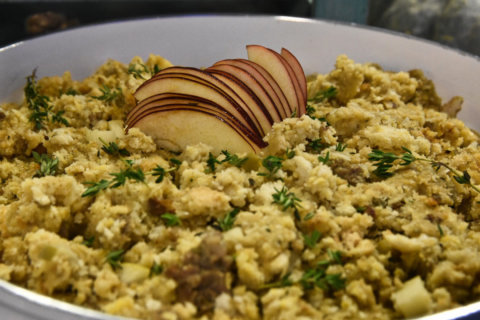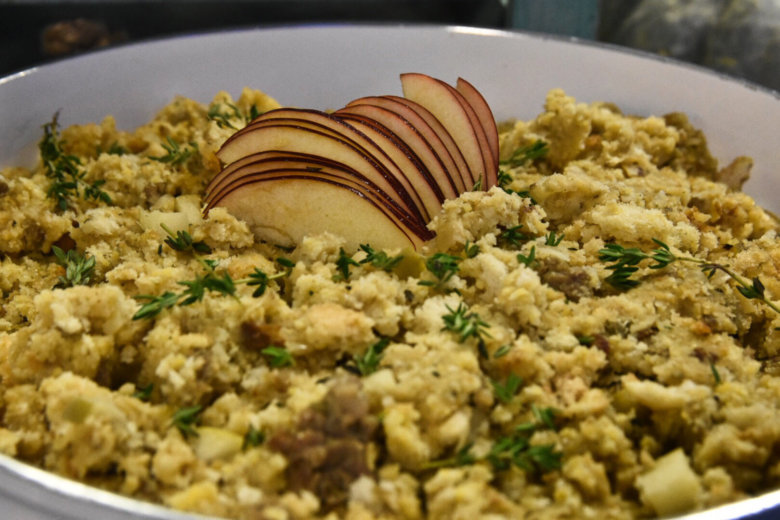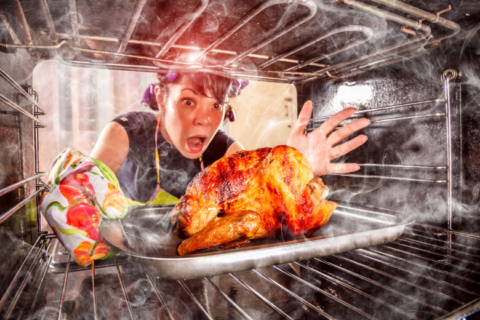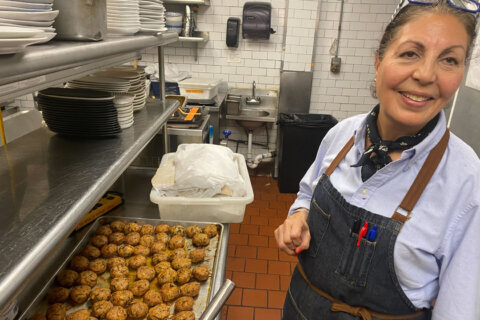
This is not an article about how to have a healthier Thanksgiving. I won’t make a case for “sticking to your diet” on Thanksgiving, nor will I engage in the annual dietitian ritual of promoting pumpkin pie as a healthier indulgence than pecan pie and encouraging sweet potatoes over mashed white potatoes. I’m not offering any advice on ‘”escaping” the holiday without gaining weight, nor suggesting anyone attempt to do so. In other words, I’m not here today to rob you of the joy associated with my favorite holiday of the year.
[See: How to Enjoy a Stress-Free Holiday.]
My sole purpose is to help preserve your Thanksgiving memories as happy ones. Because nothing ruins a perfect Thanksgiving more than being jolted awake at 2 a.m. with such acute chest pain that you think you’re having a heart attack, or having to pace around the house sipping water for hours in the hopes that the pain will subside, or running to the guest bathroom in your parents’ house and trying to vomit quietly so as not to wake the entire extended family.
Many of my patients prone to acid reflux know this experience all too well, and it leaves them feeling anxious about the upcoming holiday. How can they enjoy favorite foods, partake in family traditions and yes — even indulge — without crossing that invisible line from benignly north of “full” to violently sick?
If you’re prone to acid indigestion, acid reflux or just general “dyspepsia” from time to time, consider some of the following suggestions to plan for a delicious Thanksgiving meal, minus the side of raging acid indigestion.
1. Don’t skip breakfast on Thanksgiving day.
While some people like to skip breakfast to “save room” (or calories) in anticipation of a big meal later, this strategy can backfire. An empty, over-hungry stomach is a very acid stomach, and it can create a conflagration of gas and bloating when all that stomach acid finally encounters some food. Arriving at the table famished also makes you more prone to eat quickly and excessively (even by Thanksgiving standards), making post-meal reflux more likely.
[See: How to Survive Acid Reflux — Without a Pill.]
2. Make the Thanksgiving meal lunch or “linner.”
Planning for the large Thanksgiving meal somewhere in the noon to 3 p.m. range has a few advantages. It gives your stomach hours before bedtime to empty itself, making overnight reflux less likely than if you had the big meal at 6 p.m. or 7 p.m. followed by dessert in short order. It enables you to take a break for a few hours before having dessert, once again allowing for a substantial degree of stomach emptying before piling on more volume. Those few hours will help your brain and digestive system get their signals straight in terms of how much is enough and how much is too much, and you may be better equipped to know when the line is about to be crossed from full to “uh-oh.”
3. Take an (upright) breather before dessert.
If the Thanksgiving meal finishes between 1 p.m. and 4 p.m., it gives you plenty of time to take a lengthy break before serving dessert. Stand up. Help clear the table and wash the dishes. Take your conversation outside, and go for a leisurely walk with uncle Fred or cousin Sally. If you do choose to sit around inside and schmooze or watch football, be mindful of sitting upright rather than reclining on the couch or slumping in the easy chair. Instead, stand up or at least pull up a chair with an upright back. Gravity is your friend when it comes to keeping stomach contents moving in a one-way direction. Then, plan to reconvene for dessert about three to four hours after the main meal — say, between 5 p.m. and 7 p.m.
4. Call it quits after dessert.
You’ll want to take your last bite of food somewhere in the 6 p.m. to 8 p.m. range. Timing your meal schedule like this allows ample stomach emptying time both after the big meal and before bedtime, which should be at least a full three hours after your last bite and ideally four (or more!). Once dessert is done, make an effort to call it quits with eating or drinking anything other than water (or a TUMS). Do what you have to do to prevent yourself from wandering into the kitchen to pick at the turkey carcass, finish off stray pie crusts from the kids’ plates or squeeze in one last mouthful of stuffing. Brush your teeth, rinse with mouthwash or pop in a piece of sugarless gum and remind yourself that all of those leftovers will still be there to enjoy tomorrow.
5. Switch to non-alcoholic beverages after the main meal.
Beer, wine and other festive drinks are part of many people’s Thanksgiving traditions. But since both alcohol and fat relax the round muscle that separates your stomach and esophagus so that stomach contents can easily travel backward, drinking too much alcohol after a large, higher-fat meal is a recipe for reflux. You’re far more likely to get away with a few drinks before or during the main meal — even if it’s a large one — if you quit early and while you’re ahead. Sitting around drinking beer after beer while watching football for hours after the meal and up until bedtime is flirting with an overnight reflux disaster.
[See: Here’s How Many Calories 7 Winter Chores Burn.]
6. Have a plan B.
Even if you don’t regularly use antacids or acid-reducing medications, you might consider having some on hand for just this one day. It’s never a terrible idea to pop an over-the-counter H2 blocker medication (like Zantac or Pepcid) about an hour before bed as a backup. It won’t stop you from having reflux if you’ve gone rogue and defied my meal timing suggestions, but it will reduce the acidity of any reflux you still may experience, and in so doing, reduce the severity of the pain.
More from U.S. News
10 Tips for Avoiding Acid Reflux
6 Stupid Holiday Diet Tips You Should Ignore (And 1 You Shouldn’t)
Holiday Vices: How to Have Fun Without Overdoing It
How to Avoid Acid Reflux on Thanksgiving originally appeared on usnews.com








